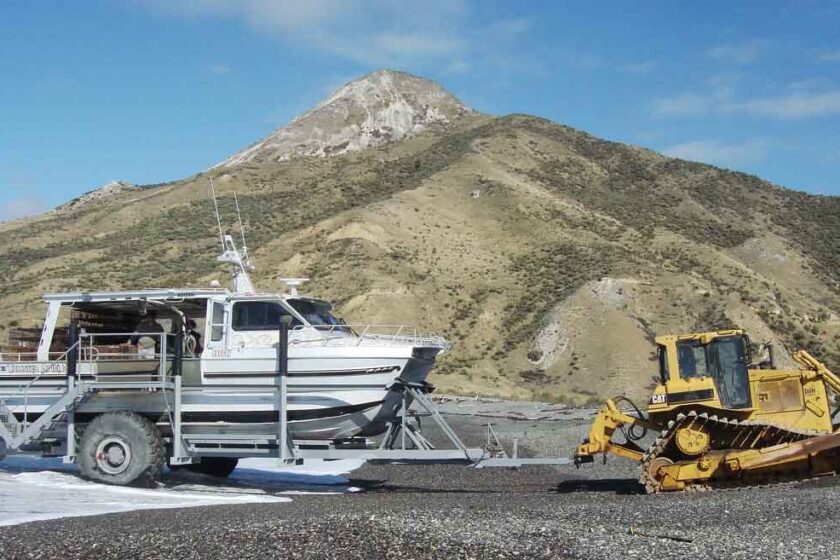Summary
- Why Freight Tracking Matters: Reduces delays, enhances customer service, and prevents loss.
- Tracking Methods:
- Manual – Simple but outdated.
- Barcode – Affordable, but lacks real-time tracking.
- RFID – Automated but costly.
- GPS – Real-time tracking, ideal for NZ terrain.
- IoT Devices – Best for sensitive shipments.
- Choosing the Right Strategy: Consider shipment type, budget, and customer expectations.
- Precision Monitoring: Real-time tracking for better efficiency and trust.
Freight tracking plays a critical role in ensuring seamless logistics operations, especially in today’s competitive and dynamic market. In New Zealand, where supply chains often span across urban centers, rural areas, and international trade routes, selecting the right freight tracking strategy is vital for businesses to maintain efficiency, transparency, and customer satisfaction. Here’s a guide to understanding freight tracking strategies and how to choose one that aligns with your needs.
Why Freight Tracking Matters
Freight tracking provides real-time visibility of your shipments, enabling better decision-making, improved efficiency, and reduced risks. Whether you’re shipping perishable goods across the Tasman or delivering heavy equipment within NZ, having accurate shipment data can help:
- Reduce Delays: Proactively address potential issues like weather disruptions or port congestion.
- Enhance Customer Service: Share precise delivery updates with your customers.
- Prevent Loss: Mitigate risks of theft or damage with accurate tracking information.
Key Freight Tracking Strategies
Different freight tracking methods offer varying levels of control, visibility, and complexity. Here’s an overview of common strategies and how they fit into the unique logistics landscape of New Zealand.
- Manual Tracking
Manual tracking involves relying on paper-based systems or phone calls to get updates on shipment status. While this method has traditionally been used, it is becoming less practical for modern supply chains, especially in NZ’s geographically diverse regions.
- Pros: Simple setup and low cost.
- Cons: High risk of human error and limited real-time insights.
- Barcode Scanning
Barcodes are scanned at key points during a shipment’s journey. Although not real-time, this strategy provides milestone-based updates, ideal for low-cost and predictable supply chains.
- Pros: Affordable and widely adopted.
- Cons: Lacks continuous tracking and requires manual scanning at checkpoints.
- RFID (Radio-Frequency Identification)
RFID uses radio waves to track shipments automatically as they move through various checkpoints. This technology is ideal for high-value or sensitive shipments, such as pharmaceuticals or electronics.
- Pros: Automated tracking with no need for manual intervention.
- Cons: Higher implementation costs compared to barcodes.
- GPS Tracking
GPS technology provides real-time location updates, making it invaluable for time-sensitive deliveries or high-value goods. GPS tracking devices are especially effective for shipments traveling across NZ’s diverse terrains.
- Pros: Real-time tracking and precise location data.
- Cons: Initial setup can be expensive.
- IoT-Enabled Smart Devices
Smart tracking devices equipped with Internet of Things (IoT) sensors are revolutionising logistics. These devices monitor conditions such as temperature, humidity, shock, and location in real time. For industries like food and beverage or pharmaceuticals, this is essential for compliance and quality assurance.
- Pros: Comprehensive data collection for enhanced visibility and decision-making.
- Cons: Requires a robust digital infrastructure.
Selecting the best freight tracking strategy for your business depends on several key factors:
- Shipment Type: Perishable goods may require IoT-enabled tracking to ensure proper temperature control, while less sensitive cargo might only need barcode updates.
- Budget: Businesses with tighter budgets might prioritise barcodes or RFID over GPS and IoT devices.
- Frequency of Shipments: High-volume operations benefit more from automated tracking systems like RFID or GPS.
- Customer Expectations: Offering real-time tracking improves customer satisfaction, especially for consumer-facing businesses.
- Regulatory Compliance: Certain industries, like food and medical supplies, must meet stringent regulations that may necessitate advanced tracking technologies.
In New Zealand, challenges such as rural delivery routes, harsh weather conditions, and international shipping complexities make advanced freight tracking systems a necessity. Implementing smart tracking solutions can help businesses in several ways:
- Boosting Supply Chain Efficiency: Reduce idle times and improve delivery accuracy.
- Enhancing Reputation: Build trust by providing customers with transparent shipment updates.
- Mitigating Risk: Proactively manage risks associated with theft, delays, or spoilage.
Precision Monitoring: Your Partner in Freight Tracking
Precision Monitoring offers cutting-edge shipment tracking solutions tailored to meet the needs of New Zealand businesses. Our IoT-enabled device provides real-time data on your cargo’s location and condition, empowering you to make informed decisions and enhance customer satisfaction.
Whether you’re transporting perishable goods, high-value electronics, or everyday essentials, our solutions ensure peace of mind throughout the logistics journey.
Final Thoughts
Choosing the right freight tracking strategy isn’t just about technology; it’s about aligning your choice with your business goals, shipment requirements, and customer expectations. By leveraging innovative solutions like those offered by Precision Monitoring, New Zealand businesses can overcome logistical challenges and achieve greater efficiency, reliability, and customer trust.
To learn more about our shipment tracking solutions, contact Precision Monitoring today and ensure your logistics operations are always ahead of the curve.






